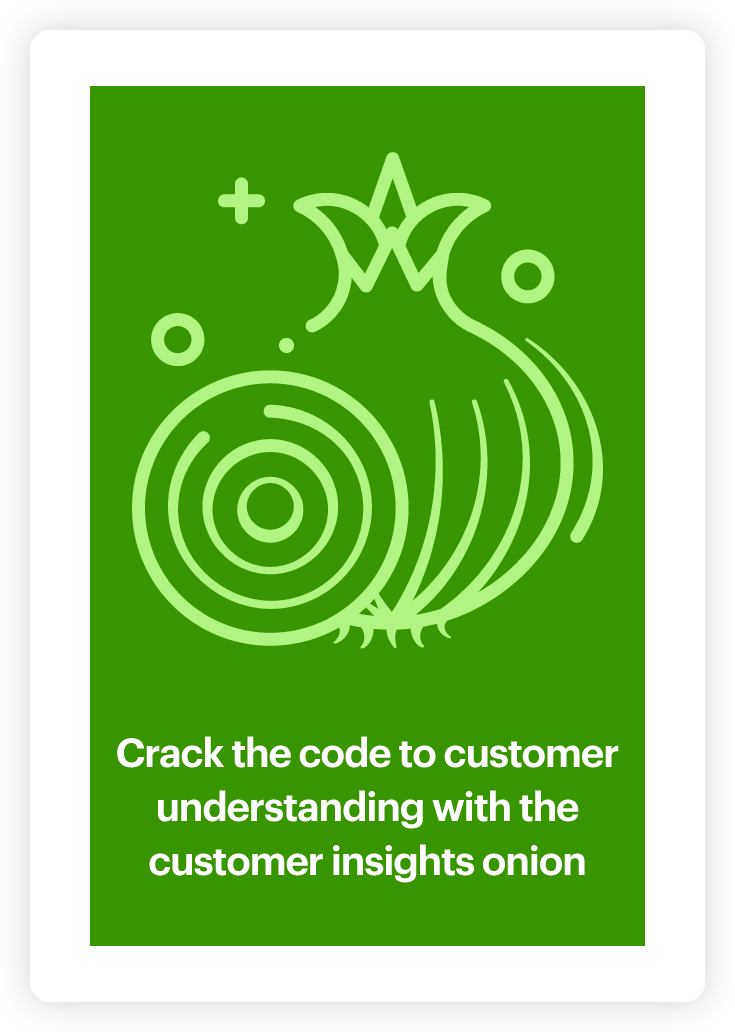Does packaging matter? Analyzing consumer reviews

Before a product is sent to market, millions of advertising dollars are spent on packaging design. Thousands of hours are spent deciding the exact shade of pink, the exact curvature of the font, and the exact way a consumer should feel when they see it on a shelf.
But do customers really care? Will they overlook product imperfections as long as the box looks good? Does packaging matter? Let’s see.
To provide you with some real life customer insights examples, we selected three brands known for iconic or innovative packaging and compared customer reviews against those of direct competitors. Through comparison, we can uncover the differences in how consumers discuss each brand.
Relative Insight pinpoints the topics, words, phrases, grammar and emotion unique to an audience or brand in comparison to its counterparts. This in turn provides customer insights, confirming whether or not brand perception aligns with actual customer feedback.
Do consumers really mention packaging as much as we would expect? And does it have a lasting influence on customer satisfaction beyond initial product perception?
Tiffany & Co.
Tiffany & Co. is a master of branding. The jewelry retailer’s iconic teal color is referred to as “Tiffany blue”, even outside of brand context. Pre-analysis, our expectation is that the topic of packaging will be seen more from Tiffany reviews compared to other jewelers like Cartier and Swarovski.
Relative Insight confirmed our initial assumption. Tiffany customers discuss packaging more than customers of other jewelry brands. They were more likely to use the words bag, box, package, teal, ribbon and presentation.
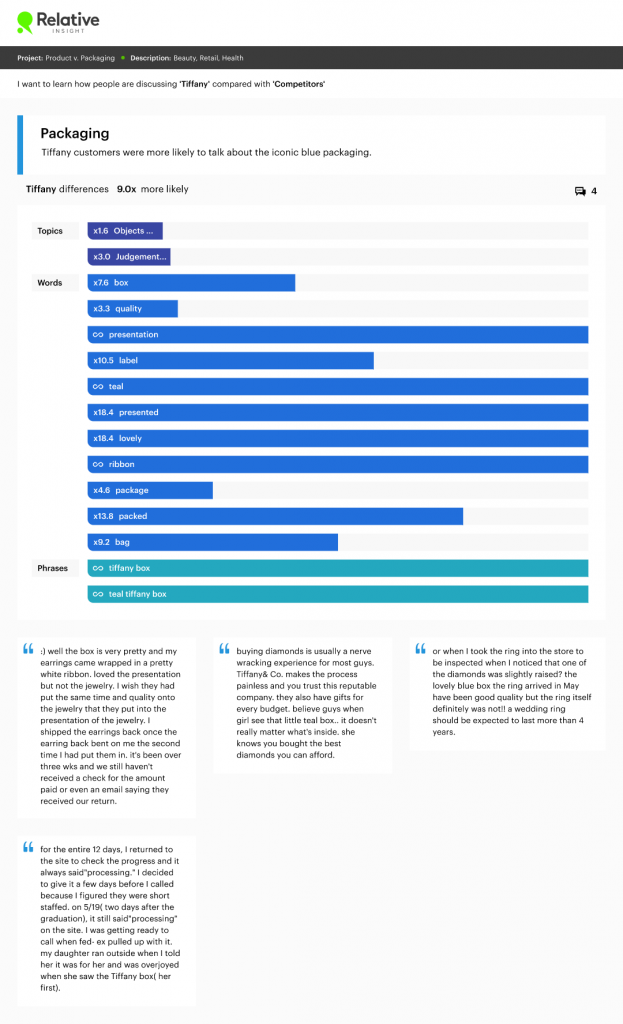
Our analysis also confirmed that these branded materials influence total brand perception. Customer reviews were more likely to mention words like brand image, reputation, iconic and brand. A Tiffany box doesn’t just protect a necklace, it’s a status symbol indicating quality. Customers approached their first Tiffany purchase with this reputation in mind, but were often let down by the product and its durability.
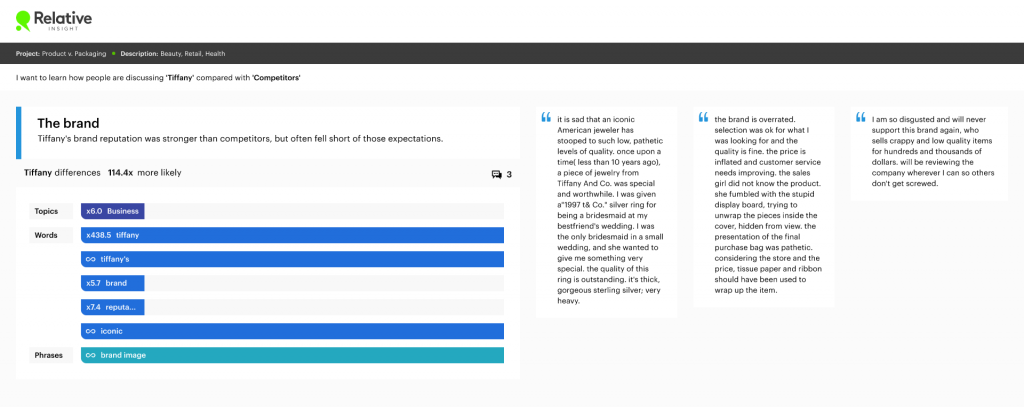
Care/of
Aesthetics aren’t the only way to attract consumers. Practical changes to packaging can enhance the product and ease barriers to use. People are notoriously bad at remembering to take their vitamins every day, so Care/of delivers individual packages of your daily vitamin regimen.
Compared to brands like Puritan’s Pride and The Vitamin Shoppe, Care/of reviewers raved about the simplicity and convenience of the unique packaging format. Consumers also responded positively to the daily inspirational quotes adorning each vitamin packet, the clean look of the box on their counter, and the biodegradable materials. They were more likely to use words like packages, compostable, individual, simplicity and easy.
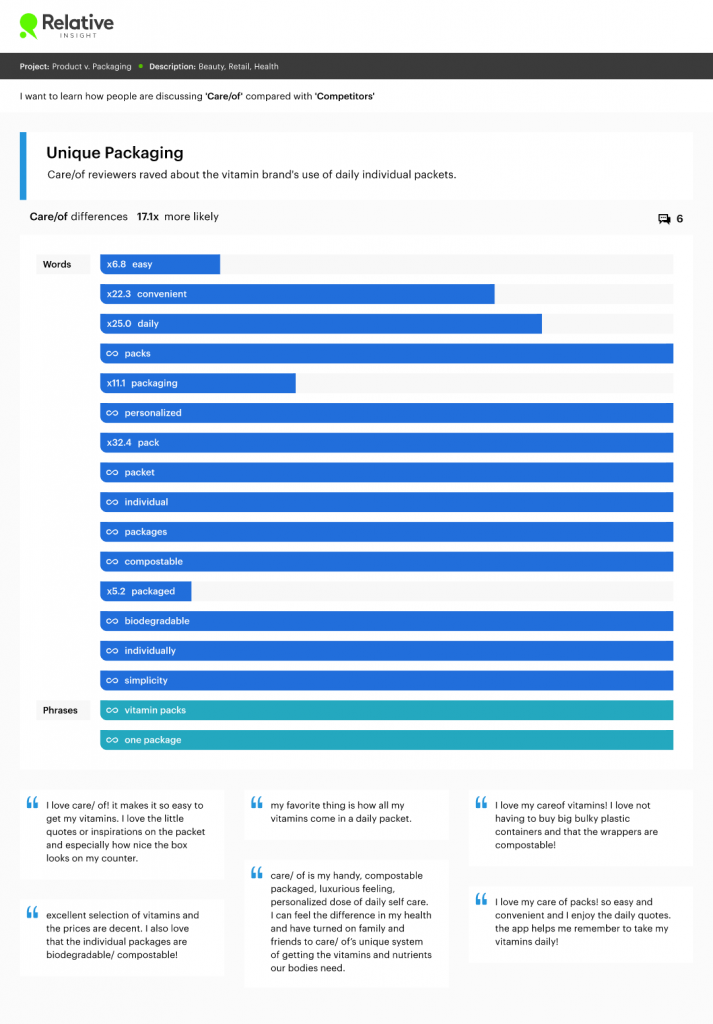
Glossier
Glossier burst into the saturated beauty scene in 2012 as a refreshing alternative. Known equally for quality products and simple design, this reputation was reflected in the reviews we analyzed in comparison to competitors like Tarte Cosmetics and Benefit Cosmetics.
Reviews mentioned the brand’s memorable pink bubble pouches used to hold every order and minimalist white bottles consistent across all products. Consumers called the packaging super cute and beautiful, with many reusing the bags and pouches to hold other items.
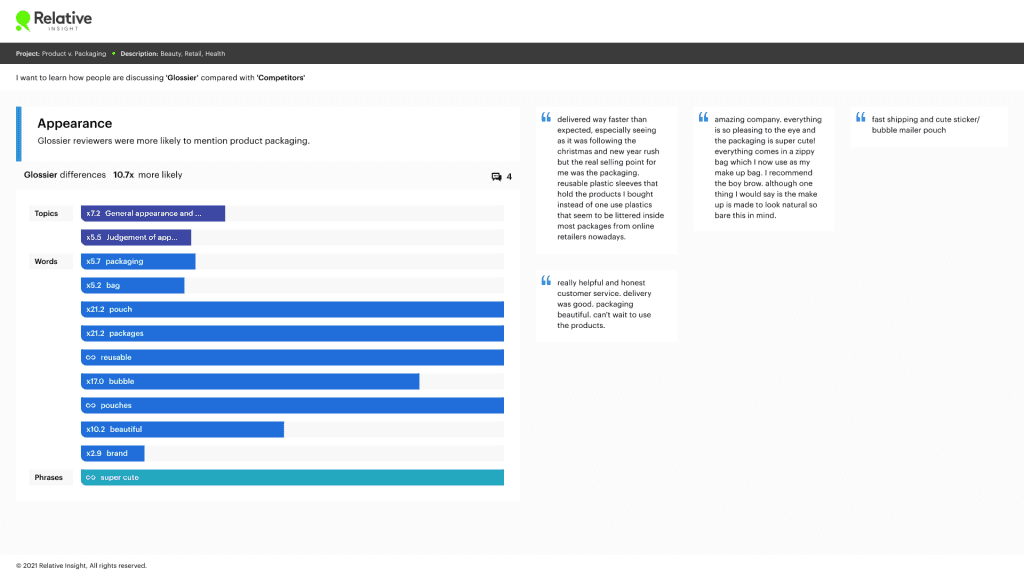
Does packaging matter? Yes, consumers value appearance and make purchases based on their attraction to the aesthetics or ease of a brand’s packaging. In crowded markets like health and beauty, unique or innovative product packaging can be the difference between success and failure.
